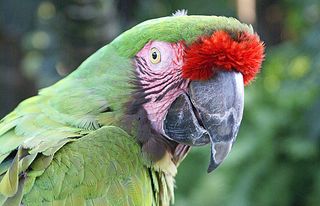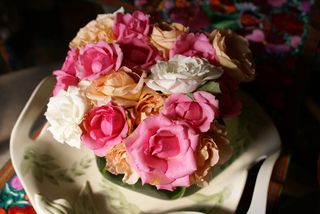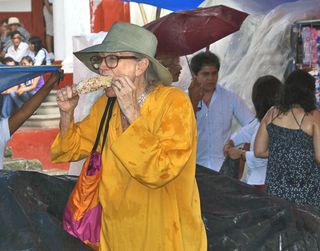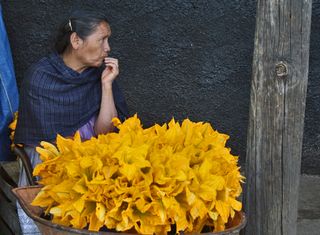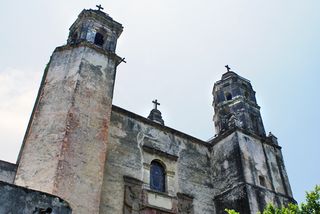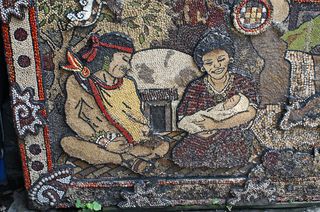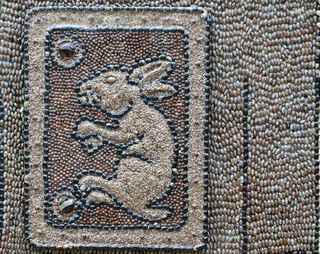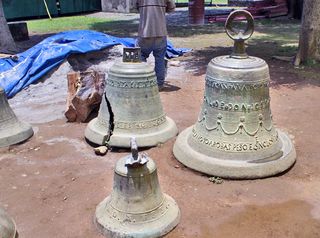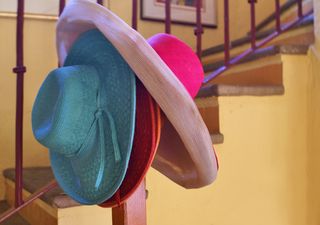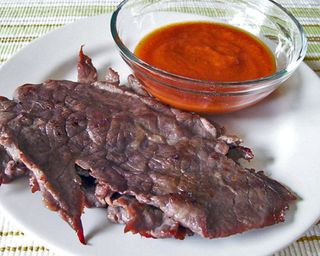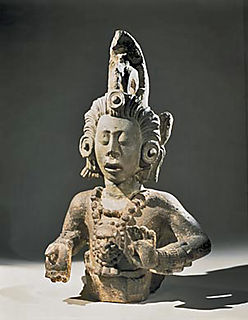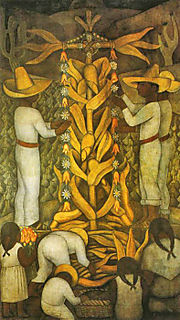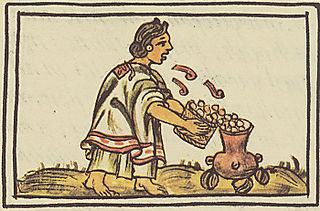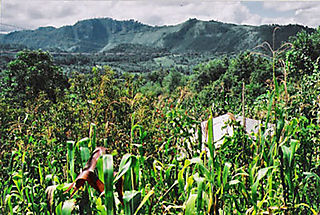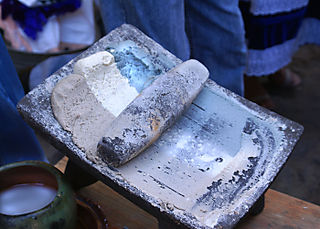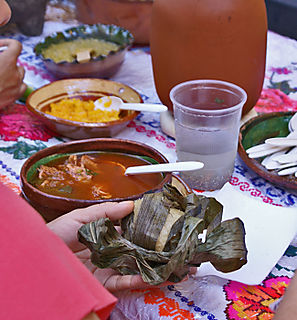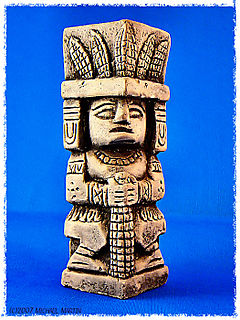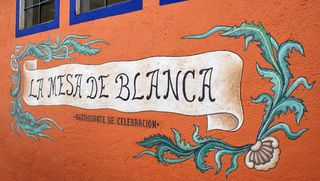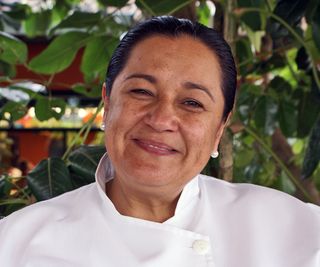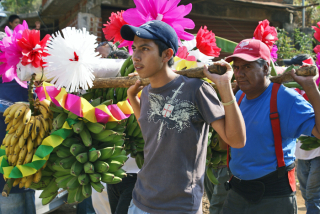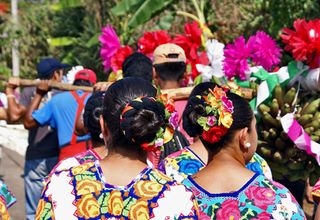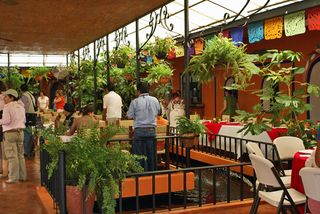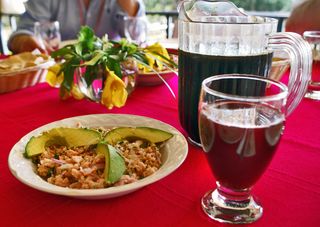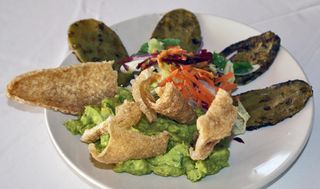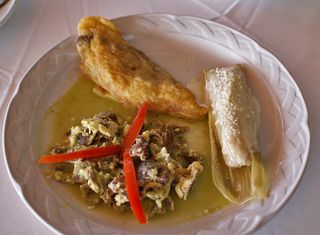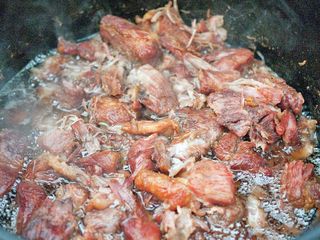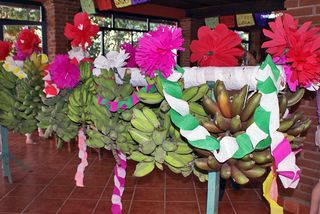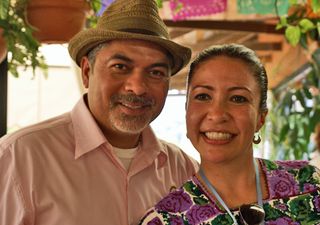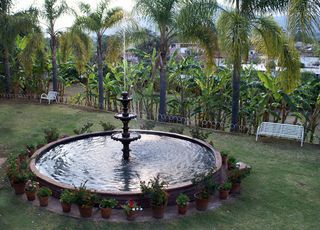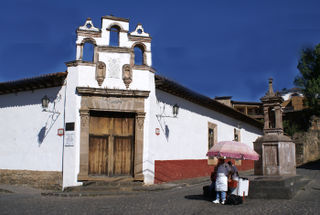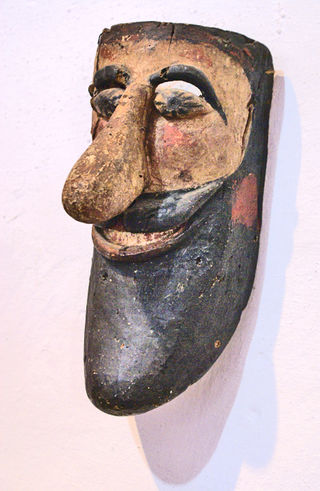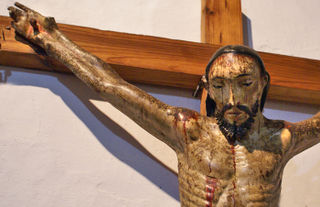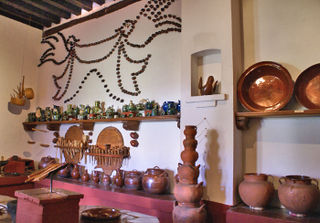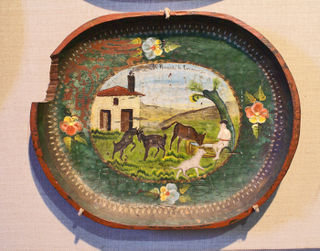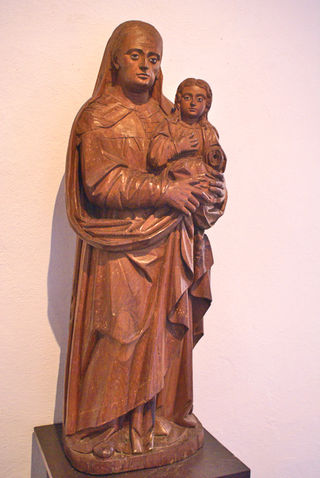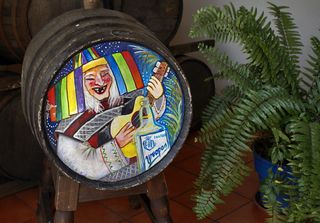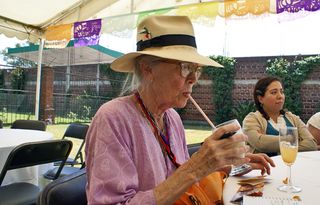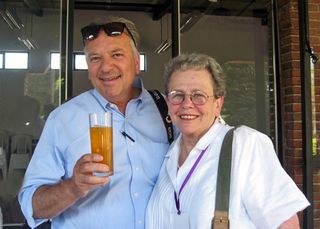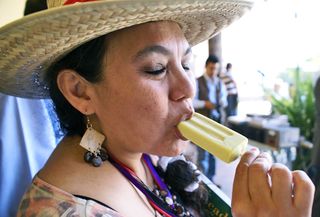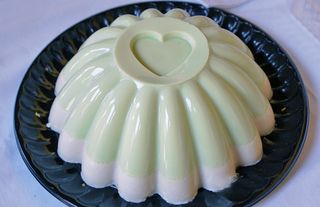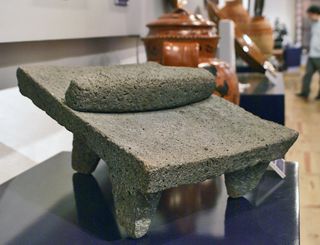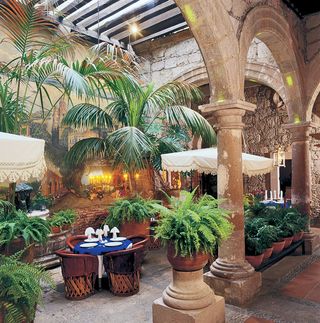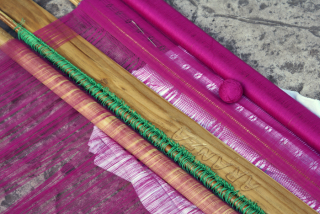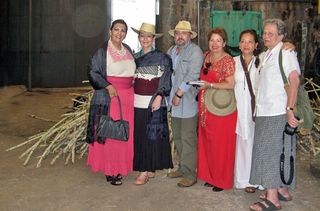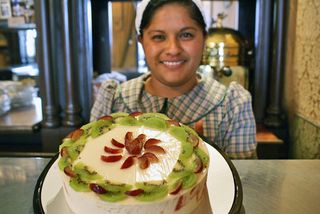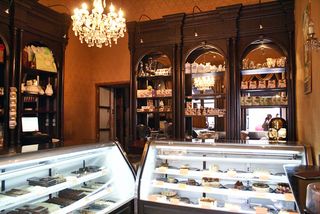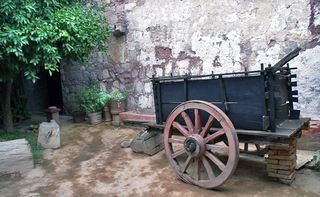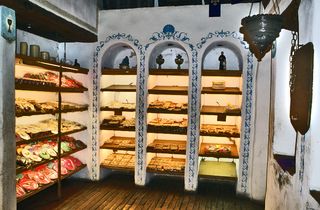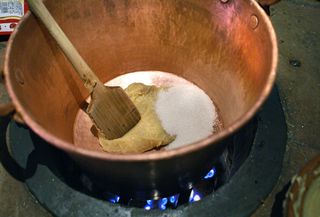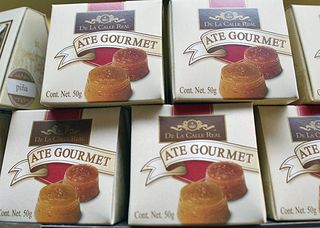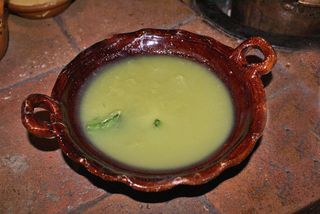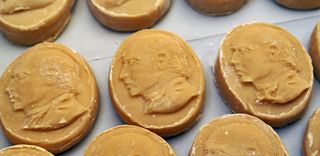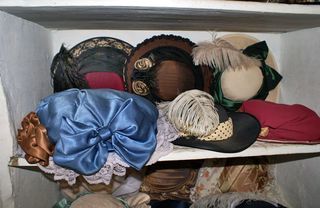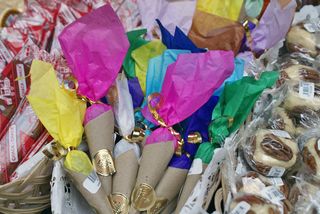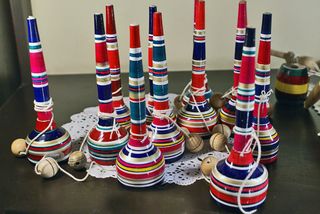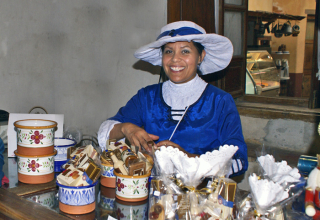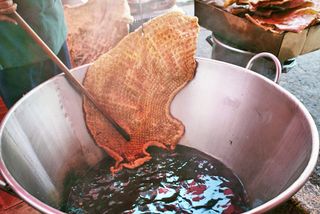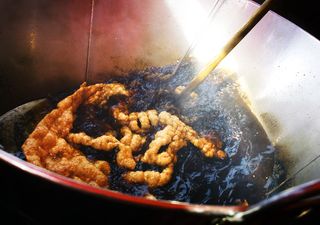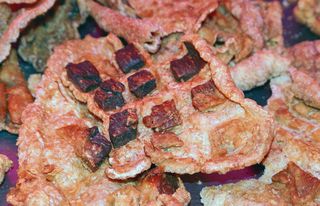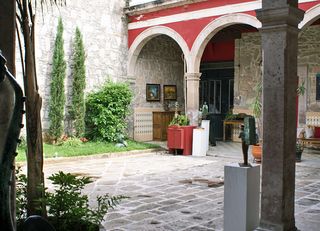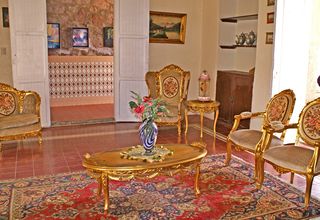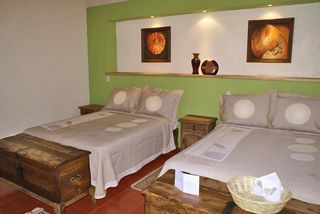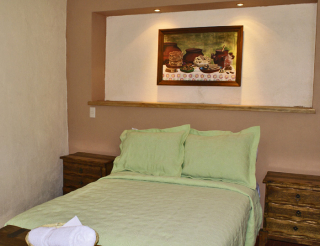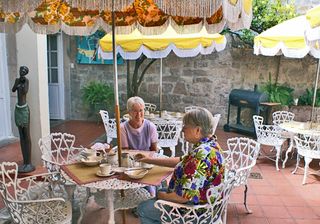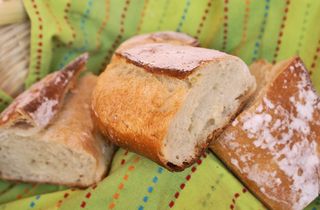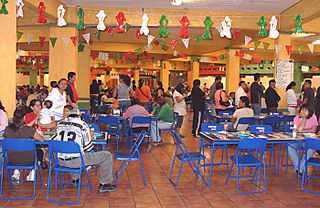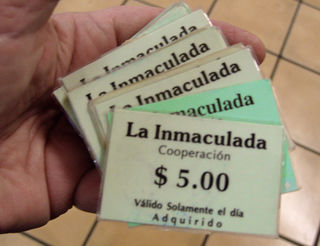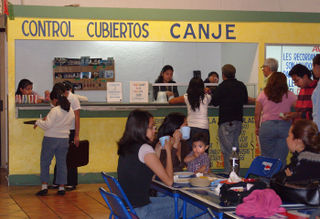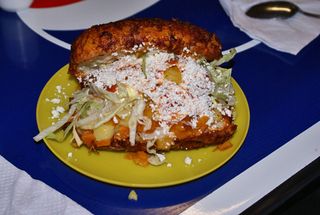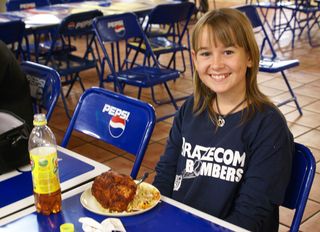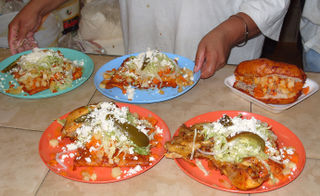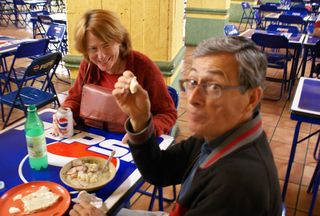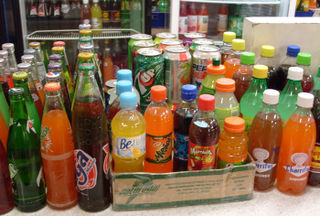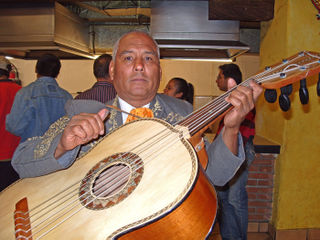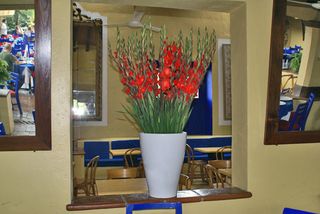
Tepoztlán's Restaurante El Ciruelo is the perfect setting for a leisurely mid-afternoon comida (main meal of the day), for drinks and botanas (snacks), or simply for coffee and dessert with friends.
Betty Fussell, Rondi Frankel, and I spent a warm, sunny Monday morning shopping in Tepoztlán's street market around the main town plaza. We didn't make any major purchases, but we had a terrific time looking at all the clothing and artesanía (arts and crafts) available at the booths. Suddenly all three of us were hot, tired, and more than anything, famished. Betty suggested that we head for Restaurante El Ciruelo, so off we went, praying to San Pascual Baylón (the patron saint of the kitchen) that El Ciruelo was open on Monday. It was!

At El Ciruelo, open every Monday, you will enjoy a beautiful setting as well as a marvelous meal. Our table faced lush green gardens with a backdrop of Tepozteco, Tepoztlán's craggy mountain.
We settled ourselves in the covered central open area of the restaurant and studied the menu. Everything sounded terrific and we wanted it all. Reason prevailed, however, and we limited ourselves to ordering a couple of appetizers, a sopa seca, and a main dish, all served al centro–to share.
In Mexico, there are distinctions between sopas, the literal definition of which is soup: one type sopa is sopa aguada (wet soup), which can be caldo (broth), consomé (consomme), or crema (cream soup). In rare instances, sopa aguada is called just sopa: Sopa Azteca (Aztec soup) or Sopa Tarasca (Tarascan soup) are two examples.
The second type sopa is sopa seca, which, to the foreigner, doesn't seem like 'soup' at all. Sopa seca refers to standard Mexican-style red rice, espagueti o macaroni con crema (spaghetti or macaroni served with cream sauce), or fideos, a thin pasta more like vermicelli than any other kind of pasta.
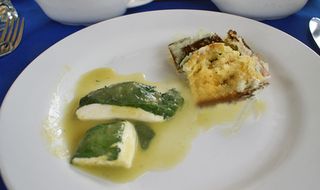
The three of us shared two appetizers: left, an absolutely delicious quesillo (Oaxaca cheese) wrapped in hoja santa and bathed in a light and subtle lemony sauce and top, pastel de elote (corn cake) served drizzled with crema (Mexican table cream) and sprinkled with rajas de chile poblano (strips of poblano chile).
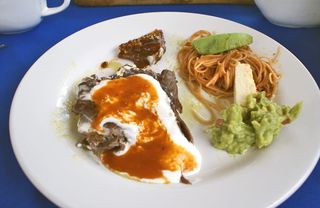
Clockwise from the left, our platillo fuerte (main dish) included cecina de Yecapixtla (seasoned, grilled beef), served with black beans and slathered with crema and salsa, the sopa de fideos (garnished with sliced avocado) that we ordered separately, and guacamole garnished with squares of chicharrón.
We relaxed at El Ciruelo for nearly an hour after finishing our delicious meal, enjoying the breezes, the view, and one another's company.
Restaurante El Ciruelo
Calle Zaragoza #17
Barrio La Santísima
Tepoztlán, Morelos, México
Tel: 739.395.1203
If you'd like to try preparing sopa de fideos at home, Mexico Cooks! prepares it like this:
Sopa de Fideos Estilo Mexico Cooks!
Serves 3 or 4 as a side dish. It's a great change from rice or potatoes.
Ingredients
200 g pasta de fideos, either long or short (I prefer La Moderna brand, but any brand will do)
1 chile serrano, finely minced*
1/2 small white onion, finely minced*
2 Tbsp vegetable oil
2 cups boiling water
1 Tsp tomato bouillon powder (Knorr Suiza or other)
*Both of these may be omitted if you prefer.
In a heavy medium-size sauté pan, heat the vegetable oil and sauté the minced chile and onion over a medium flame until they are translucent. Add the pasta de fideos and sauté until the pasta is light golden brown.
Add the two cups of boiling water and the tomato bouillon powder. Stir until the powder is well dissolved.
Cover and simmer until the pasta has absorbed almost all of the water. Serve.
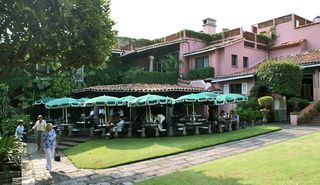
One of several elegant and formal terraces at Las Mañanitas.
Rondi Frankel, who grew up in Mexico City and its environs, wanted to introduce me to Hotel and Restaurante Las Mañanitas, a favorite childhood haunt in Cuernavaca. Betty, who had celebrated a birthday at Las Mañanitas just a few days before our visit, was eager to go back again.
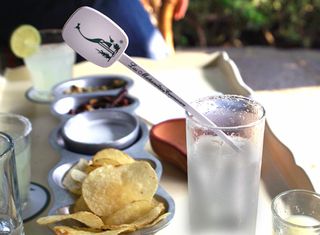
A tray of botanas (salty snacks) served with drinks at Las Mañanitas. That's my paloma in the foreground. A paloma is prepared in a tall glass with tequila, jugo de limón (lemon juice), salt, and grapefruit soft drink, over ice. It's such a light and refreshing drink.

Once he realized that we were suckers for his looks, this irresistible beggar ate all of our botanas, first out of our hands and then right out of the dishes on the tray–peanuts, pepitas (squash seeds), and even the potato chips!
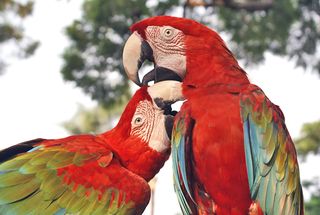
The pair of guacamayas (green wing macaws) at Las Mañanitas were much more photogenic than the three of us friends.
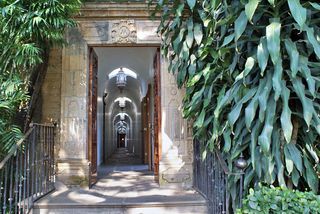
A gorgeous arched interior passageway at Las Mañanitas. The precisely manicured grounds, home to exotic birds both feathered and human, are also home to original bronze sculptures by Francisco Zúñiga.
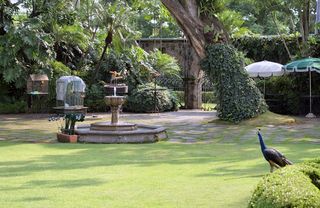
Another view of the gardens at Las Mañanitas. This mid-20th Century hotel has 20 guest rooms or suites, a restaurant a pool, a spa, and many other high-end amenities.
Las Mañanitas
Calle Ricardo Linares #107
Cuernavaca, México 62000
USA Tel: 01.800.789.4988
After more than a couple of hours' relaxation while bewitched by the old-style Mexican elegance that pervades Las Mañanitas, we reluctantly tore ourselves away and headed home to a more modern kind of Mexican elegance at Betty's borrowed heaven-on-earth pied a terre in Tepoztlán. What a blessed life!
Looking for a
tailored-to-your-interests specialized tour in Mexico? Click here: Tours.
